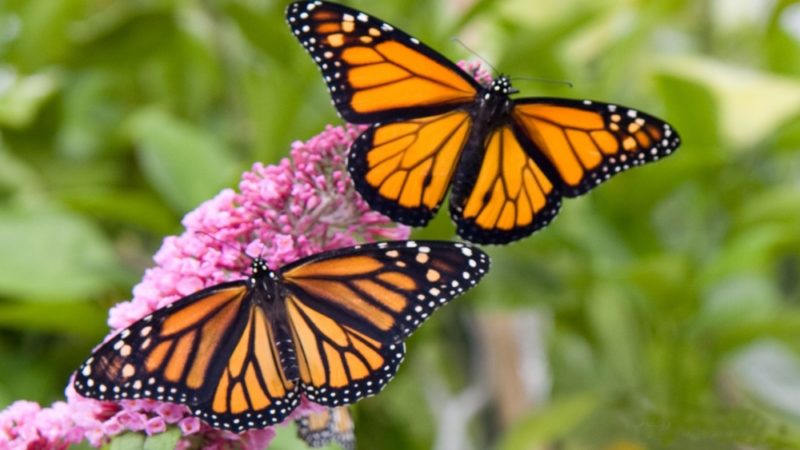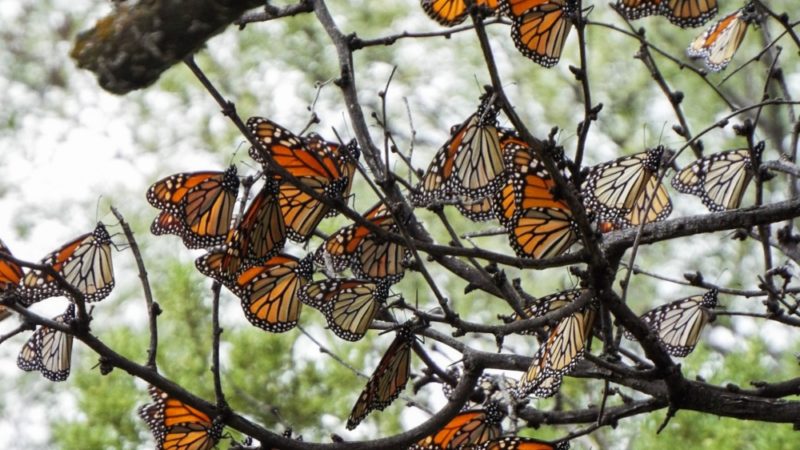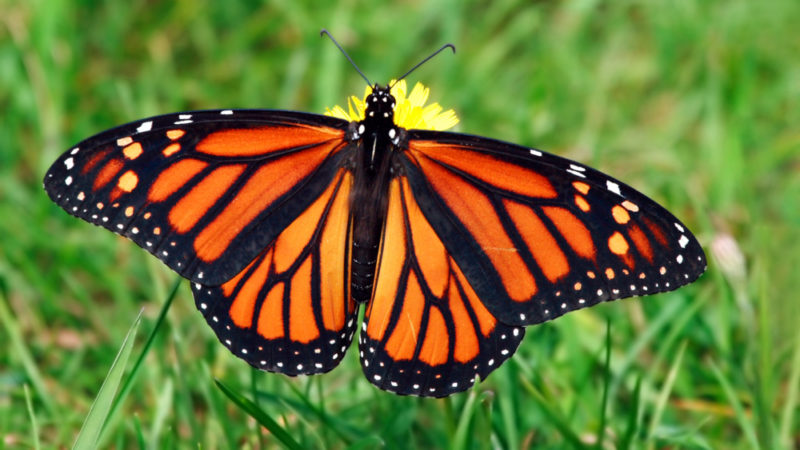Monarch Butterfly is one of the largest and most beautiful species of flying insects. Conquers not only its surprisingly bright colors and wingspan, but also incredible endurance.
Material Content:
Monarch Butterfly Habitat
Danaida lives in countries with a warm climate. She is met in Madeira and the Canary Islands, in North America and North Africa, Australia and New Zealand. Here, during the period of migration, the trees are completely strewn with individuals of this species. The rest of the time, monarchs prefer open spaces, where they seek food for themselves, flying from place to place. It can be pastures, meadows, sections along the roads.
Butterflies are hard to miss, their wings are saturated in color: black stripes are located on an orange background, and white spots are scattered around the edge. In males, the color of the scales is dark orange, in females - orange-yellow. Due to the fact that the food supply of these Lepidoptera is limited to only a few names of plants, they are forced to fly long distances in an attempt to catch flowering.
Character and lifestyle
Danaida monarch leads a daily life, typical of most butterflies. In the adult stage, it feeds, flying from flower to flower, then mates and lays eggs. Caterpillars hatch from the masonry during development, the latter become chrysalis after a while, and from them beautiful creatures with large wings already appear, which both adults and children like to watch.
The insect belongs to migratory species. In Mexico, a special reserve has been created, where at a certain period of the year you can catch a large concentration of monarchs and enjoy their beautiful flight with pleasure.Since they make movements in large groups (up to 100 million individuals), the spectacle is unforgettable.
Migration features
A distinctive feature of these bright representatives of the Nymphalid family is their ability to fly at incredible distances for such small creatures. Air movements of 5000 km and more were recorded. And on a day, a butterfly is able to overcome up to 130 km. And, interestingly, she can do it much faster than a person. The speed of an unsecon in the air reaches 16-17 km / h.
In autumn, when daylight becomes shorter and air temperature drops, the Danaids begin their journey from North America to the Mexican state of Michoacan and the California coast.
At the place of wintering, they hibernate for 4 months, settling in tight "clusters" on the branches of trees. Then eggs wake up and lay, from which a young generation of Lepidoptera hatch in spring. And, although the "old" lady dies after breeding, their children return to the habitats of their ancestors - to the northern regions of America, so that descendants can again make an amazing journey across the ocean.
What does the monarch eat
The feed base of this species is not very diverse. The diet of the caterpillars includes the foliage of most species of the cotton tree and several types of colotropisis. Butterflies also include nectar in their menu, extracted from the inflorescences of goldenrod and common lilac, clover and alfalfa, teasel and kutra, carrots and window sills. Where these plants are abundant, monarchs have a good chance of survival.
Reproduction and longevity
The life span of these insects is small and ranges from 2 to 6 weeks, with the exception of the autumn generation, which is allocated 9 months. Since the distances traveled by the monarch during flights are very large, only the next generations can reach their destination. They consist of the grandchildren and great-grandchildren of those adults who began the journey.
Obeying the ancient instinct, they unmistakably find their way to the corners of the globe where their ancestors were once born. Insects find the right territory with incredible accuracy. Their clusters can be found annually not only in the same places, but also on the same trees.
Enemies in nature
Danaids are a poisonous species of butterflies, so they have practically no natural enemies in nature. Those few predators who dare to try them, most often spit out their prey. These Nymphalids acquire a bitter and unpleasant taste due to the fact that their caterpillars feed on a quack (this plant has poisonous milky juice). Larvae and adult monarchs have a very bright color, which warns of a possible danger.
To date, only humans pose a threat to the survival of these creatures. To protect beautiful and rare insects, new reserves are created where lepidopterans are protected, and you can watch them without disturbing their natural behavior. Butterfly migration is an amazing phenomenon that must be preserved for future generations.

















